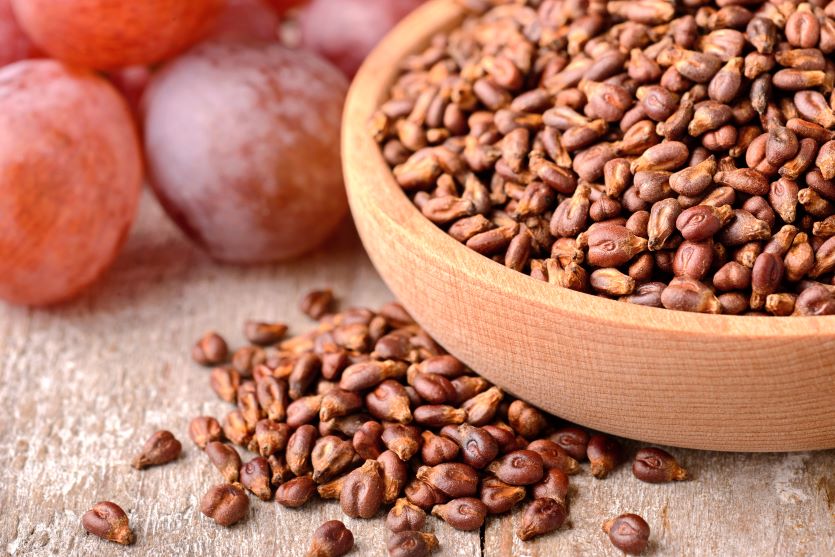How Grape-Seed Extract Supports Your Health
You don’t eat grapes for the seeds. Think about how often you enjoy chomping down on the large seeds in grapes (the small, soft seeds in “seedless” grapes don’t count)? If you do that, how well do you think whole seeds are absorbed by your body anyway? But some of the beneficial phytonutrients from grapes, are primarily concentrated in their seeds. Grape-seed extract was created to solve this problem.
It contains a concentrated dose of valuable phytonutrients, in a form that is much easier for your body to digest. It’s true that grape-seed extract only contains a small portion of the overall nutrients found in whole grapes. Healthy compounds like vitamins C and K, copper, and various phytonutrients come from adding grapes into your diet. So, don’t ditch the grapes, instead, consider the reasons to add grape-seed extract, too. *
The History and Benefits of Grape Phytonutrients
How did humans first learn about the benefits of the phytonutrients in grape seeds if they aren’t typically eaten? Wine is the way. Humans have been drinking wine for as long as they have been cultivating grapes (several thousand years). Little did these first wine drinkers know, but wine contains the phytonutrients also found in the whole grapes. These compounds are incorporated into wine during the fermentation process, when the crushed grapes, seeds, stems, skin, and juice (called the must) is held in vats for several weeks.
The phytonutrients in wine, particularly red wine, and grape-seed extract have since been found to support cardiovascular health. Studies on the grape bioflavonoids have shown them to be free radical scavengers that may be even more potent than the antioxidant vitamins C and E. So these compounds effectively help maintain healthy low-density lipoproteins (LDL) levels already in the normal range. *
Grape-seed extract also been shown to help support a normal, healthy inflammatory response, and a growing body of research suggests an additional role in optimizing capillary strength.*
The Compounds in Grape-Seed Extract
Grapes contain a large variety of phytonutrients. Resveratrol is one that you might be familiar with. It’s found primarily in the skin of grapes. Grape-seed extract contain a complex mixture of two compounds named catechin and epicatechin.
Catechin and epicatechin belong to the chemical family of flavonoids. They are targeted because they are the most tightly linked to the overall benefits of grape-seed extract. Such as cardiovascular health, supporting healthy inflammation, and neutralizing free radicals.*
Different grape-seed extracts will have varying amounts of catechin and epicatechin. This is further complicated by the fact that different types of grapes and growing seasons result in inconsistent amounts of these beneficial compounds. This variation can be minimized through a process called “standardization.”
Standardization requires an extract to be measured (e.g. GPC/HPLC, Bates-Smith assay) and then concentrated to set amount of target compounds. A high-quality grape-seed extract will have set minimum levels of the polyphenols catechin and epicatechin. This ensures that the product is consistent and offers the same health benefits from batch to batch.
Incorporating Grape-Seed Extract into a Healthy Diet
There is no substitute for a healthy diet. Grape-seed extract isn’t going to replace whole grapes, or the fruits and vegetables you should already be eating daily. Whole fruits and vegetables contain fiber, vitamins, minerals, and other phytonutrients that aren’t found in grape-seed extract. But grape-seed extract does contain concentrated doses of other phytonutrients that are harder to attain from the diet.*
Grape-seed extract should be looked at for what it is—a supplement to a healthy diet and not a replacement for a healthy diet. To learn more about the benefits of grape-seed extract and its role in a supplement, you can read about USANA® Proflavanol® C here.*
*These statements have not been evaluated by the Food and Drug Administration. This product is not intended to diagnose, treat, cure, or prevent any disease.




